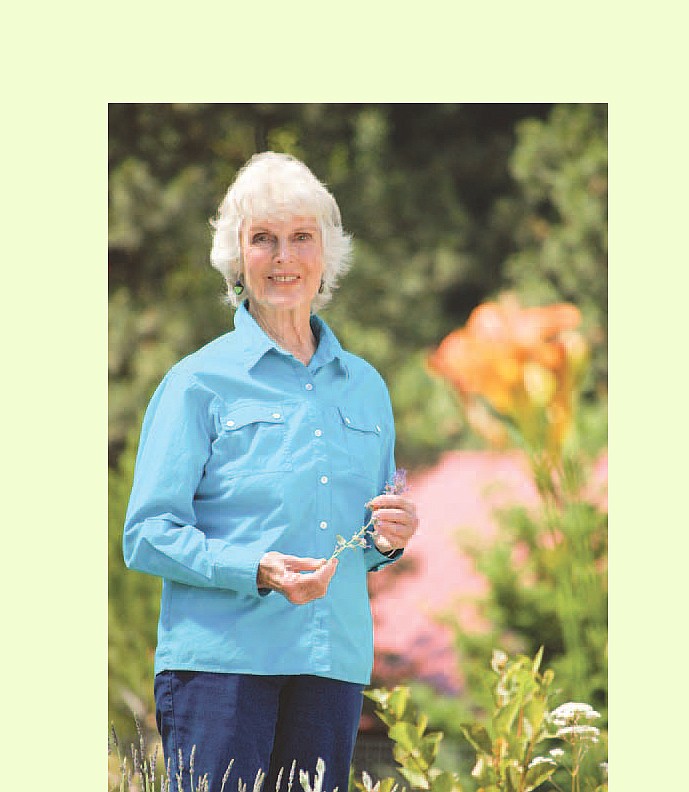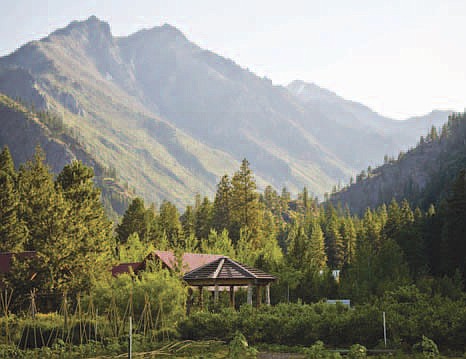Harriet Bullitt
April 20, 2013 at 12:48 p.m. | Updated April 20, 2013 at 12:47 p.m.
As part of the prominent Northwest family whose accomplishments include founding KING Broadcasting and the Bullitt Foundation, Harriet Bullitt created Pacific Northwest Magazine and Sleeping Lady Mountain Resort. She is a multi-talented entrepreneur and long-time supporter of the arts and environmental conservation.
That belief was nurtured by her mother, prominent Seattle businesswoman and philanthropist Dorothy Stimson Bullitt, while spending summers at the family property near Leavenworth. It has translated into a lifetime of action, directed by her belief that “the more people know about the natural world, the more they care for it…naturally.”
One of three philanthropic siblings, Harriet, together with the late Charles Stimson Bullitt and the late Priscilla “Patsy” Bullitt Collins, continued their mother’s legacy of enhancing and protecting the landscape of Seattle and the Pacifi c Northwest through various personal endeavors and the Bullitt Foundation.
Started in 1952 by Dorothy Bullitt, the foundation contributed to many Seattle institutions, such as Children’s Hospital, the Seattle Symphony and the Cornish School of the Arts. In 1983, the Bullitt Foundation began to focus its funding on children’s issues, peace and the environment; it’s grown into a nationally recognized organization, funding far-reaching programs throughout the region.
Harriet Bullitt describes herself as happiest whenever she’s outdoors. Her love and respect for the Environment that surrounds her has directed her work — whether striving to clean up nuclear waste, preserve the Siskiyou mountain wilderness areas, prevent logging of ancient trees on Vancouver Island, restore Icicle Creek to its natural habitat, or establish a retreat that links community, nature and beauty — Bullitt has remained connected to the power and majesty of the earth.
“It’s the one continuous thread I’ve had in my life,” she quietly explains. “We grew up climbing trees, rolling stray logs when the tides were low… sometimes just sitting on a rock and listening to the sounds. Outdoor life was the way kids lived; we had to be called to come in for our meals.”
The Beginnings of the Bullitt Legacy
Born to Alexander Scott Bullitt and Dorothy Stimson, Harriet Bullitt was reared in an atmosphere of adventure and dedication. Her grandfather was a lumberman who operated a successful sawmill after the Great Seattle Fire; her father was a distinguished attorney. Her mother, although born into a life of privilege and leisure, remained rooted to the outdoors and her love of sports. Described as a “spirited woman,” she passed on her sense of enthusiasm and determination to her children. Widowed at an early age, Dorothy Bullitt went on to build an incredible media corporation that continues to serve the Seattle area today.
Despite the trappings of wealth and privilege, Harriet Bullitt describes herself growing up “as the typical Northwestern girl.” Like her mother, she enjoyed the freedom of the outdoors and spent many afternoons riding her horse through the Wenatchee Valley. An excellent equestrienne, she continues to ride her beloved Icelandic horses and says that her mother never worried about the dangers a young girl on a horse might encounter alone in the wilderness. “Mother always said to ‘stay with your horse, dear, and you’ll be fine,’ ” Bullitt laughs, remembering a favorite family anecdote. “She worried about those CCC (Civilian Conservation Corps) boys but never about anything in the woods.”
Bullitt has pursued a variety of interests throughout her life — including seaplane and glider flying, competitive fencing, scuba diving and even flamenco dancing. Her dedication to civic activities is well-known throughout the region, but it’s her devotion to environmental causes that brings her the most pleasure. “There’s always something going on close to your home, something you can do where you live,” Bullitt says. “You can pick a group, decide on something that matters to you, and go out and make a difference.”
A Lifetime of Service
As a multitalented entrepreneur, Bullitt has supported not only the environmental causes of the Pacific Northwest but the artistic communities as well. She and her sister assumed leadership of KING Broadcasting which had been founded by their mother, and developed it into a chain of radio stations, TV and cable stations before selling it in 1991. The profits from that sale went toward the Bullitt Foundation’s $100 million endowment, which funds organizations that “protect, restore and maintain the natural physical environment of the Pacific Northwest.” Bullitt credits her brother Stimson for his vision, direction and leadership in this area.
“He was so determined to fund and support environmental agencies,” she explains. She and Patsy Bullitt also saved the Seattle classical music station KING-FM, donating it to a nonprofit group, assuring that their mother’s love of classical music and opera would flourish for generations to come.
But it was her love of the natural world and the protection of our local region that motivated Bullitt toward one her longest endeavors: the foundation of Pacific Northwest magazine (now Seattle magazine) and Pacific Search Press. “Upon my return to Seattle in the 1960s,” she recalls, “I noticed lots of people moving into our beautiful area. However, they were thoughtlessly, carelessly damaging our waterways, our forested areas. No one was presenting ideas to help people understand the great natural beauty that surrounded us. There wasn’t a lot of communication going on.” Relying on the natural science degree she obtained at the University of Washington and her wide range of associates, Bullitt established Pacific Northwest magazine as an accessible forum for conservation and ecology education. “We linked the natural history groups together,” she explains. “We published articles on wildflowers, rocks, the Audubon Society; we just presented information in an easy-to-understand, accessible manner so people could learn about their environment.”
Her passion for 22 years, Bullitt sold the magazine in 1990 when it began to morph into more of a lifestyle format — something she says is an almost natural progression.
“Magazines follow their advertisers,” Bullitt says without rancor. “It began to become difficult to get advertisers; I’d started the magazine with a group of dedicated volunteers and we’d worked hard for years. It was time to move on.”
Her move brought her full-circle; back to the family property and the wilderness she grew up to love. I had no sooner settled in,” she chuckles, “and the property adjacent to ours went up for sale.” Slated to become a condominium development, Bullitt purchased the 67 acres, and in 1995 opened Sleeping Lady Mountain Resort. “For the first time in my life, I was out of debt, had the money and time,” she continues. “I felt it was some incredible destiny that brought me to this place.”
Inspiration and Support
From the beginning, Sleeping Lady was intended to bring people together in an atmosphere of harmony.
Bullitt believes that meetings are often stripped of their “transformational power” because the needs of the human spirit are overlooked. “So, we created a place where people can come and work on serious issues,” she explains. “Oftentimes, they arrive at Sleeping Lady and they’re very serious, almost judgmental. They’re not talking to each other outside their particular meeting; they seem distracted from what’s all around them. Within a day or two, you can observe a marked change. We’ve created a place that speaks to the whole person.”
Everything about Sleeping Lady remains true to Bullitt’s sense of wonder and appreciation of the natural world. Guest rooms are arranged to promote interaction, natural light illuminates meeting rooms, and meandering paths give rise to contemplative walks and often, talks. “We hope people come here and feel a can-do attitude,” Bullitt says. “We host lots of environmental groups, business groups, board retreats — these folks are working hard. We wish to treat them with comfort. You can work on environmental issues and still deserve good food and a good mattress,” she adds with a laugh.
Guests are treated to meals meant to refresh and energize, prepared with organic local produce and the best Northwest fish, meat and poultry. An extensive art collection is set among the walking paths. “It’s a subtle thing,” Bullitt muses. “People just notice it feels good here. It’s a sense of renewal and refreshment you can only get from the natural world.”
Continuing the Legacy
In 2004, Bullitt joined previous honorees Robert Redford, former President Jimmy Carter, Ted Turner and Seattle’s Hazel Wolf, as distinguished recipients of the Audubon Medal. The National Audubon Society’s highest honor, the award recognizes individuals who further the cause of conservation and environmental protection. John Flicker, Audubon president at the time, explained Bullitt’s continuing vision this way: “She has a national and global perspective.”
Her zeal and passion for a world of community, nature and beauty continue to evolve and grow. Founder of the Icicle Creek Watershed Council, she’s now partnering with local Chelan County groups to restore fish and wildlife around Icicle Creek. Water flow was restricted by the placement of dams on the creek in the 1930s and she’s pressured the U.S. Fish and Wildlife Bureau to restore the natural flow of the creek so as to bring back wild salmon.
“The fish are coming back,” she adds. “The Yakama Indians have had some success, working in the river, raising Coho salmon. We’re building successful liaisons with the Wild Fish Conservancy and upgrading the fish hatchery systems.”
In 1999, she founded Icicle Fund, which seeks to protect the environment while promoting the arts and history of the area. Bullitt also re-entered the broadcasting world in 1999, founding Icicle Broadcasting Co., which operates three stations serving North Central Washington. She remains on the board of the Bullitt Foundation and continues to support a wide array of environmental groups throughout our region.
But perhaps she feels Sleeping Lady Mountain Resort will be her most significant and lasting work.
“When people come to work diligently on a difficult problem, when they try to elevate themselves from difficult situations — we offer elements that release their creative potential,” Bullitt concludes. “It’s a joy to see people coming in, working hard and leaving with something they didn’t expect.”
Roberta Greenwood is a Seattle area writer and environmental activist.
Originally published in Seattle Woman magazine






